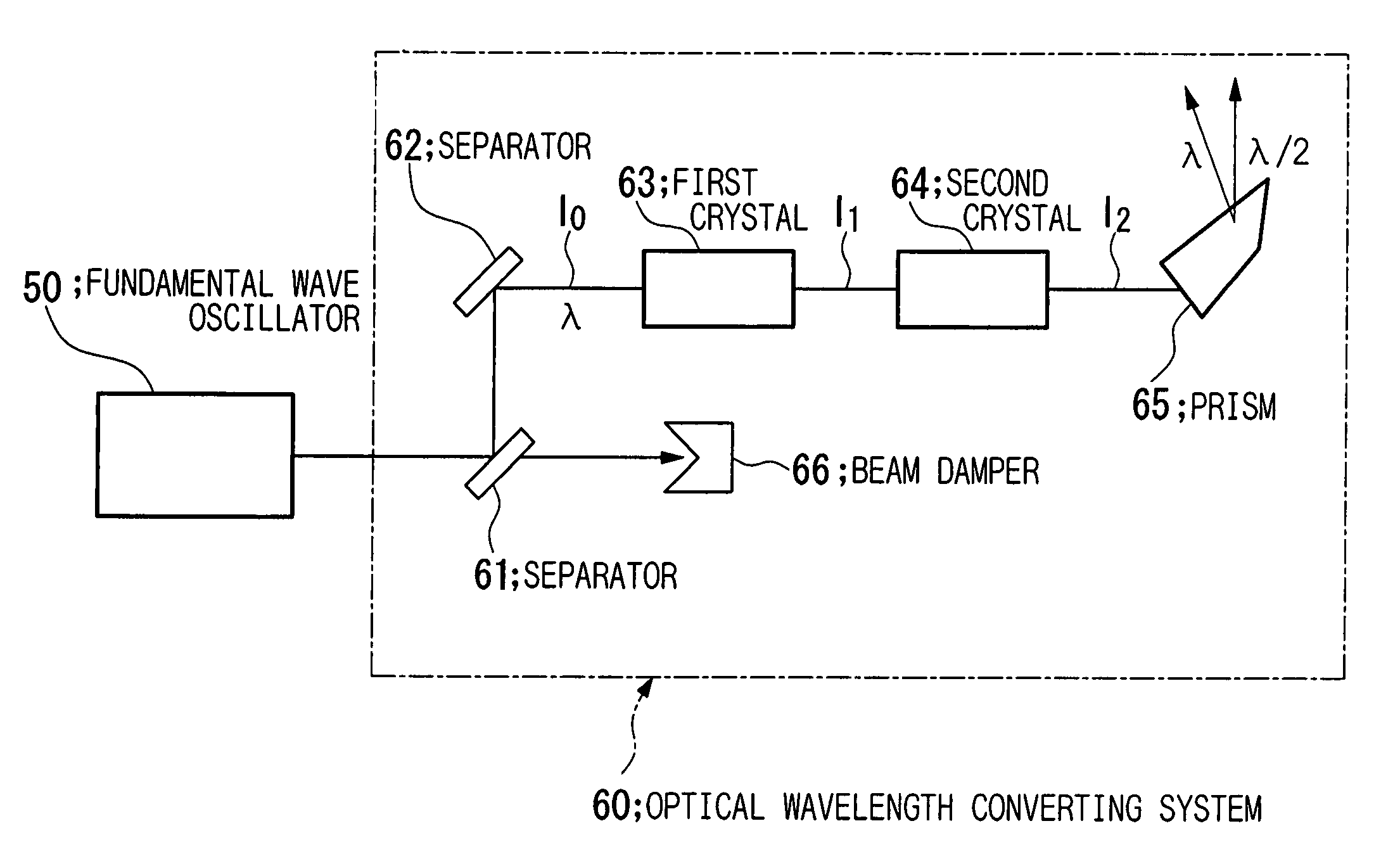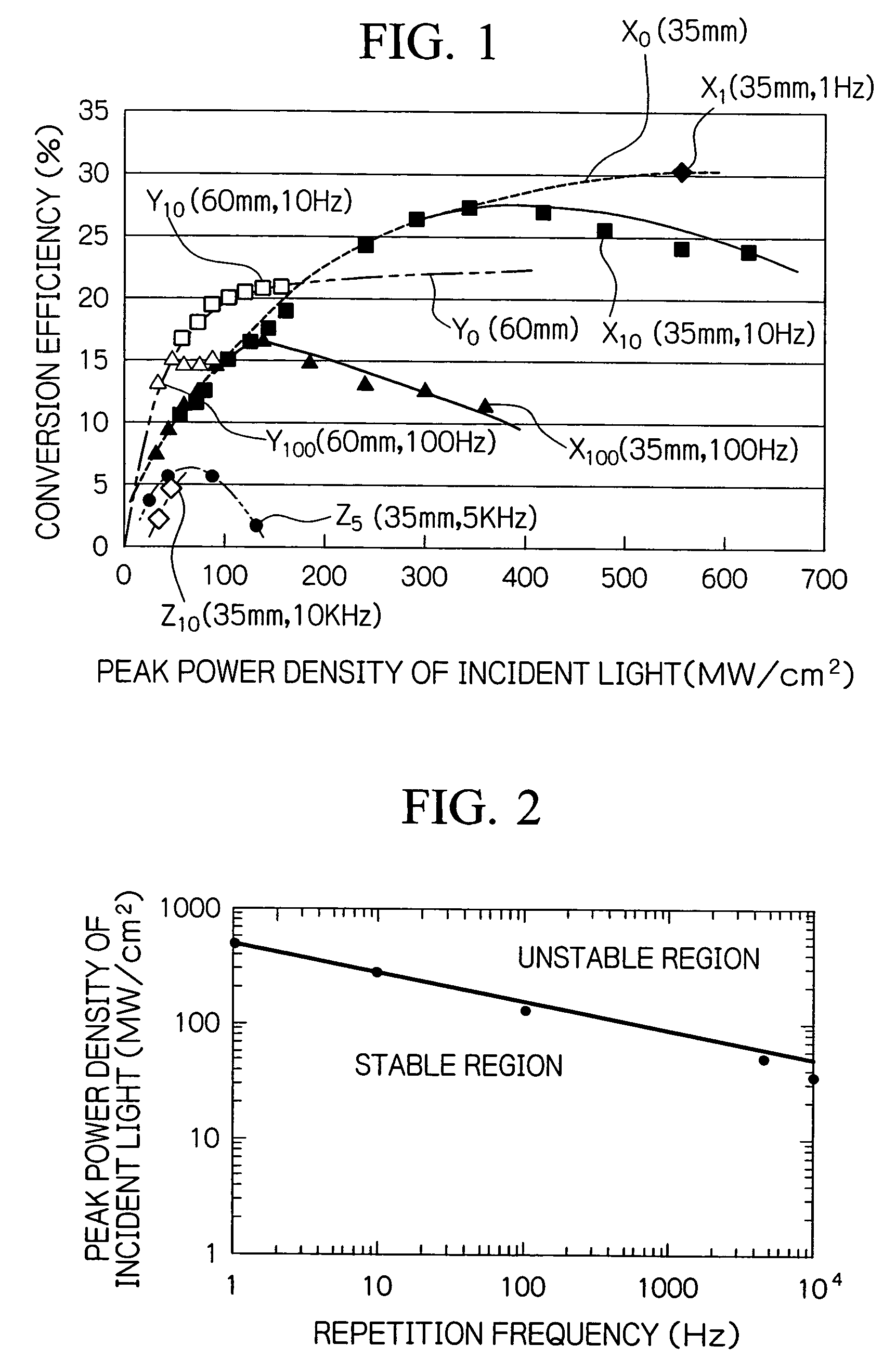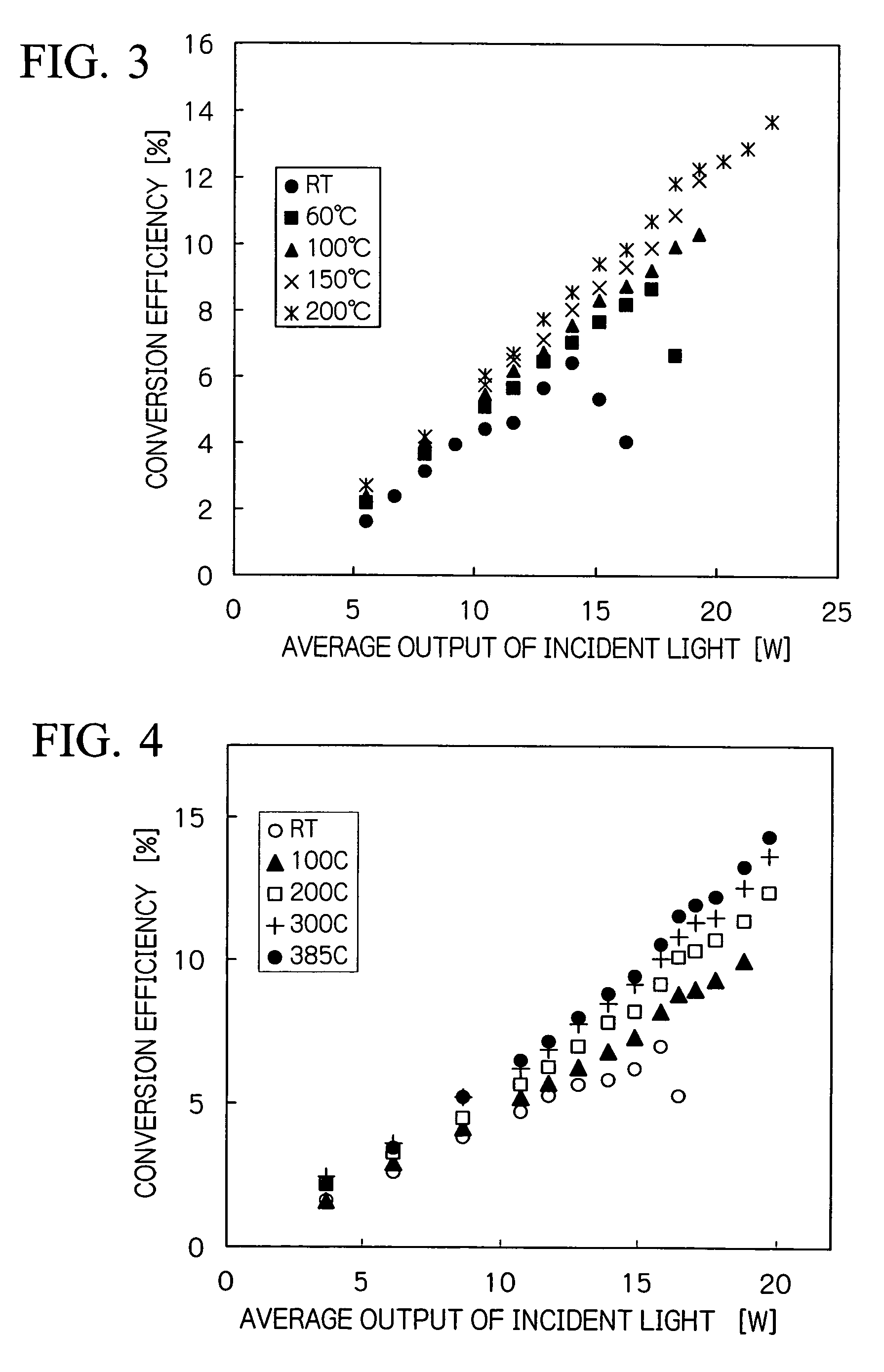Optical wavelength conversion method, optical wavelength conversion system, program and medium, and laser oscillation system
a wavelength conversion and optical technology, applied in the field of optical wavelength conversion methods and optical wavelength conversion systems, can solve the problems of low output, unsuitable light sources that radiate light having a wavelength of 500 nm or less, and have not been conventionally available, so as to reduce the impact of heat release and increase the heating and maintaining temperature for lb4.
- Summary
- Abstract
- Description
- Claims
- Application Information
AI Technical Summary
Benefits of technology
Problems solved by technology
Method used
Image
Examples
example 1
[0193]In the laser oscillating system shown in FIG. 8, LB4 which was 5 mm×5 mm in cross section and had a length of 35 mm was employed for first crystal 63, and BBO which was 5 mm×5 mm in cross section and had a length of 7 mm was employed for second crystal 64. Second harmonic waves were generated using green laser with an average power of 30 W, a repetition frequency of 10 kHz, a pulse width of 30 n sec, a beam diameter of 0.5 mm and a wavelength of 532 nm, as incident light I0.
[0194]The average peak power density of incident light I0 was 51 MW / cm2 at this time, while the power and average peak power density of the fundamental waves (532 nm) that remained in radiated light I1 were 28.5 W and 48.4 MW / cm2, respectively. Ultraviolet light (266 nm) with a stable output of 6.3 W was obtained as radiated light I2.
[0195]Note that when a typical beam (532 nm) having an average peak power density of 48.2 MW / cm2 is input to BBO, bulk damage will occur. In the case of this example, however, ...
example 2
[0198]In the laser oscillating system shown in FIG. 8, LB4 which was 5 mm×5 mm in cross section and had a length of 35 mm was employed for first crystal 63, and CLBO which was 5 mm×5 mm in cross section and had a length of 10 mm was employed for second crystal 64. Second harmonic waves were generated using a green laser as incident light I0 under the same conditions as in Example 1, i.e., with an average power of 30 W, a repetition frequency of 10 kHz, a pulse width of 30 n sec, a beam diameter of 0.5 mm and a wavelength of 532 nm.
[0199]The average peak power density of incident light I0 was 51 MW / cm2 at this time, while the power and the average peak power density of the fundamental waves (532 nm) that remained in radiated light I1 were 28.5 W and 48.4 MW / cm2, respectively. Ultraviolet light (266 nm) with a stable output of 6.5 W was obtained as radiated light I2.
[0200]Note that when a typical beam (532 nm) having an average peak power density of 48.4 MW / cm2 is input to CLBO, bulk ...
example 3
[0206]A mirror for reflecting both fundamental and second harmonic waves was employed in place of separators 61 and 62, and beam damper 66 was omitted from the laser oscillating system according to the embodiment shown in FIG. 8. Sum frequency waves were then generated using this thus-modified laser oscillating system.
[0207]LB4 that was 5 mm×5 mm in cross section and had a length of 35 mm was employed for first crystal 63, and LBO which was 5 mm×5 mm in cross section and had a length of 15 mm was employed for second crystal 64 in this laser oscillating system. A fundamental wave laser having a wavelength of 1064 nm and an average power of 10 W, and second harmonic waves having a wavelength of 532 nm and an average power of 10 W, were employed for incident light I0, to generate an ultraviolet laser of wavelength 355 nm, which is the third harmonic wave.
[0208]Regarding this incident light I0, the repetition frequency was 10 kHz, the fundamental wave laser's pulse width and beam diamet...
PUM
| Property | Measurement | Unit |
|---|---|---|
| wavelength | aaaaa | aaaaa |
| wavelength | aaaaa | aaaaa |
| wavelengths | aaaaa | aaaaa |
Abstract
Description
Claims
Application Information
 Login to View More
Login to View More - R&D
- Intellectual Property
- Life Sciences
- Materials
- Tech Scout
- Unparalleled Data Quality
- Higher Quality Content
- 60% Fewer Hallucinations
Browse by: Latest US Patents, China's latest patents, Technical Efficacy Thesaurus, Application Domain, Technology Topic, Popular Technical Reports.
© 2025 PatSnap. All rights reserved.Legal|Privacy policy|Modern Slavery Act Transparency Statement|Sitemap|About US| Contact US: help@patsnap.com



